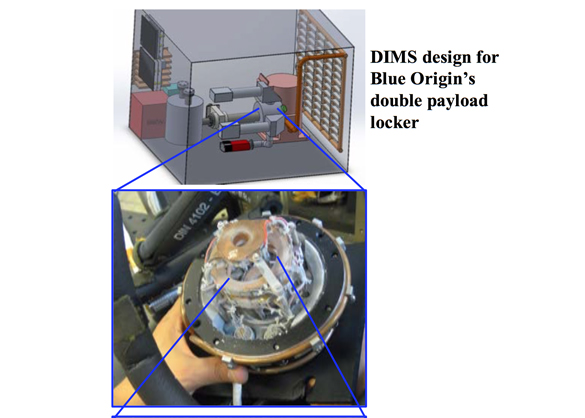Dust In-situ Manipulation System (DIMS)
PI: Julie Brisset, University of Central Florida
PI: Julie Brisset, University of Central Florida

- NA
The study of dust particles in the universe is relevant to numerous fields of research, including astronomy, planetary and atmospheric sciences. In particular, the levitation of dust clouds, for the study of their evolution or interaction with light, is crucial to the understanding of many environments in space (protoplanetary disks, interstellar medium, etc.). However, the challenges of levitating dust clouds in 1g include size sorting due to gravity and preferential particle orientation due to the levitating medium. Cloud levitation in microgravity is also limited by hardware constraints (cell walls) and residual accelerations of the flight platform. The Dust In-situ Manipulation System (DIMS) technology builds on past experiments in order to offer a flexible, long-term microgravity platform for future dust experiments.
DIMS will allow for the observation of an undisturbed (no physical contact between grains and test cell walls) dust cloud for several minutes (no cloud shifting), which has never been demonstrated yet. The objective of the test flight with Blue Origin is the demonstration of DIMS functionality and operation under several minutes of microgravity. The dust grains within the cloud will be observed from two different angles using high-speed cameras, thus creating a 3D image of the cloud.
• Solar system exploration and utilization programs for NASA and the commercial space industry
• Research in astrophysics, astrobiology, chemistry, planetary sciences, and atmospheric sciences
Technology Details
-
Selection DateREDDI-F1-18 (Aug 2018)
-
Program StatusActive
- 0 sRLV
Development Team
-
PIJulie Brisset
-
Organization
-
SponsorNASA
-
More Information

